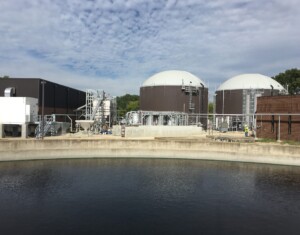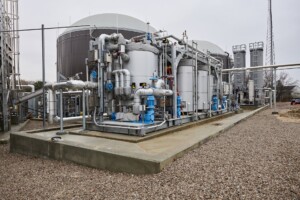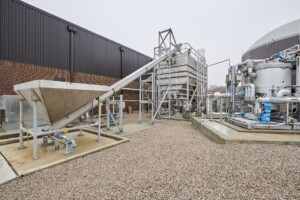Challenge
It can take a lot of energy to kill pathogens and harmful bacteria in wastewater. That is, when your processing technology is 40 years old like Medina County’s was at the Kenneth W. Hotz Water Reclamation Facility (formerly the Liverpool Wastewater Treatment Plant). To process the facility’s biosolids more efficiently and save energy costs, the County implemented a design-build performance contract.
Approach
Performance contracting is a design-build method that helps owners fund efficiency-related improvements. Generally, the contract specifies the improvements to be made, and the efficiencies to be achieved. Savings from the efficiencies are used to pay for the improvements. For a set time after a project is completed, its performance is monitored and savings verified. If a shortfall occurs, the owner is reimbursed. Put another way, improvements delivered under a design-build performance contract are guaranteed to pay for themselves.
Black & Veatch served as the performance contractor on Medina County’s project. Under the contract, the County implemented numerous efficiencies, including:
- Digester Improvements. The facility features thermal hydrolysis process (THP) technology. Applied in pretreatment, THP increases the biodegradability of wastewater residuals. This leads to increased digester loading rates. THP also produces more digester gas. Seizing this opportunity via a combined heat and power (CHP) system, the facility is designed to capture digester gas, fuel about 30% of its energy requirement, and cut in half its energy costs.
- Tank Savings. The project features steel tanks, two for anaerobic digestion, one for high-strength waste storage. The tanks were built from the ground up using an innovative steel-coil, spiral-seam construction. It was the technology’s first-ever installation in the US. The steel tanks are safer and take less time to build, and cost about a third less than traditional concrete tanks.
- Phosphorus Recovery. Previously, the county only removed phosphorus. Facility upgrades included adding sidestream-enhanced biological phosphorus removal (SEBPR) to the liquid process, allowing the county to gain additional treatment capacity. Additionally, a struvite harvesting system was added to recover phosphorus from the biosolids stream, and convert it back into fertilizer form.
Results
The Kenneth W. Hotz Water Reclamation Facility serves about 35,000 customers, and it processes an average of 9 million gallons a day (mgd), or 34 ML/d. The upgrades completed under the performance contract are expected to reduce the facility’s energy costs by $1.5 million and its annual operating costs by approximately 50%, while increasing its effectiveness and environmental sustainability.
Other WCDA member firm involved: Kokosing Industrial (installing contractor)
“Black & Veatch’s team has been great to work with. Their process experts have been readily available, open to many questions, and deeply engaged in understanding our operations and wastewater treatment plant.”
—Amy S. Lyon-Galvin, PE, Medina County Sanitary Engineers, in WaterWorld, January 31, 2017




